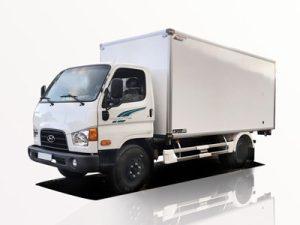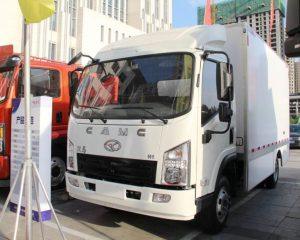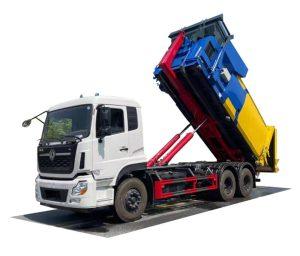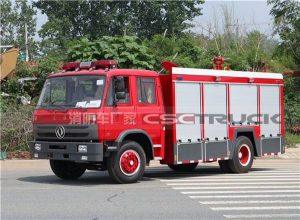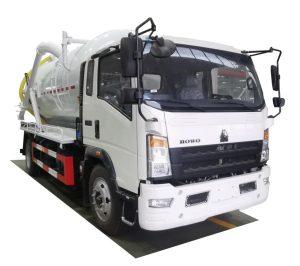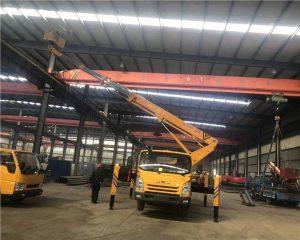Monday to Saturday - 8:00 -17:30
Classic Garbage Trucks: A Comprehensive Guide
Garbage trucks, often overlooked and underappreciated, play a crucial role in maintaining the cleanliness of our communities. From the early designs to the modern mechanisms of waste collection, these vehicles have undergone remarkable transformations. In this article, we’ll explore classic garbage trucks, their evolution, characteristics, and significance in waste management.
The Evolution of Garbage Trucks
Early Beginnings
The concept of garbage collection dates back centuries, but the first dedicated garbage trucks emerged in the early 20th century. These vehicles were often horse-drawn carts that collected waste from households, signaling the beginning of organized waste management.
Introduction of Motorized Trucks
As the automobile industry boomed, garbage trucks transitioned from horse-drawn models to motorized versions in the 1920s. Early models were typically flatbed trucks, equipped with simple mechanisms for loading waste. The introduction of these motorized vehicles marked a significant advancement in sanitation efforts.
Innovations in Design
Throughout the decades, garbage truck designs evolved significantly. In the 1950s and 1960s, the rear-loader design gained popularity, allowing for easier and more efficient collection of waste. These trucks featured an automatic compaction system that helped compress waste, maximizing storage capacity and minimizing the number of trips to disposal sites.
Key Features of Classic Garbage Trucks
Body Styles
Classic garbage trucks typically featured various body styles, each catering to specific waste collection needs. The common body styles include:
- Rear Loader: Preferred for residential areas, these trucks have a hinged back door that allows easy waste access.
- Front Loader: Ideal for commercial and industrial waste, front loaders have specialized arms that lift and dump dumpsters.
- Side Loader: These trucks allow the driver to operate the waste collection mechanism from the cabin, improving safety and efficiency.
Compaction Mechanisms
One of the most important features of classic garbage trucks is their compaction mechanism. Compactors compress waste material, ensuring that more garbage can be stored within the truck. This efficiency reduces the frequency of trips to disposal sites and minimizes operational costs.
Engine and Performance
Classic garbage trucks were equipped with robust engines, typically diesel-powered, which provided the necessary torque for heavy hauling. Their performance metrics, including fuel efficiency and load-bearing capacity, were key factors that defined their reliability and functionality.
Popular Classic Garbage Truck Models
Some of the classic garbage truck models that made an impact over the years include:
| Model Name | Year Introduced | Features |
|---|---|---|
| Ford F-Series | 1948 | Durable design, easy maintenance, variety of body styles |
| International Harvester | 1920s | First motorized garbage truck, flatbed design |
| Freightliner | 1980s | Advanced compaction systems, innovative chassis design |
Environmental Impact of Garbage Trucks
Waste Management Solutions
Garbage trucks play an essential role in waste management. Their design allows for the efficient collection and transport of waste materials, reducing the risk of pollution and improving public health. Understanding their contribution helps communities adopt environmentally-friendly waste practices.
Advanced Recycling Features
Many classic garbage trucks were early innovators in recycling initiatives, often equipped with separate compartments for recyclable materials. This innovation paved the way for modern recycling programs, making waste separation easier for homeowners and businesses alike.
Classic Garbage Trucks in Popular Culture
Film and Television Appearances
Classic garbage trucks have made memorable appearances in various films and television shows, showcasing their role in everyday life. Notably, the beloved character “Oscar the Grouch” from Sesame Street lives in a trash can, representing the fun side of waste collection.
Collectible Memorabilia
The charm of classic garbage trucks has led to a surge in collectibles. From miniature models to vintage advertisements, enthusiasts relish owning pieces of automotive history that celebrate these hardworking vehicles.
Restoration and Preservation of Classic Garbage Trucks
Finding Classic Models
For hobbyists interested in restoring classic garbage trucks, sourcing the right model can be challenging. Various online marketplaces and specialty auctions provide opportunities to find vintage vehicles.
Restoration Process
The restoration of classic garbage trucks involves several steps, including:
- Assessing the vehicle’s condition and planning repairs.
- Finding replacement parts or restoring original components.
- Painting and detailing to preserve the truck’s historical appearance.
Documentation and History
Researchers and restoration enthusiasts often emphasize the importance of documenting the history of classic garbage trucks. Maintaining records not only appreciates the vehicle’s lineage but also educates future generations about waste management’s evolution.
Practical Tips for Waste Management
Effective Waste Separation
To minimize landfill impact, households should practice effective waste separation. This includes:
- Designating bins for recyclables, compost, and general waste.
- Educating family members about the importance of proper disposal.
Choosing the Right Garbage Truck for Communities
When communities consider waste collection vehicles, they should evaluate factors such as:
- Local population and waste generation rates.
- Environmental initiatives and recycling goals.
- Budget for maintenance and fuel consumption.
Future of Garbage Trucks
Electric and Autonomous Vehicles
The future of garbage trucks is leaning towards innovation with electric and autonomous vehicles. These advancements promise reduced emissions and improved efficiency in waste collection.
Smart Waste Management Solutions
Integration of smart technology, such as GPS and sensors, enhances route optimization for garbage trucks, leading to time and fuel savings. Communities are increasingly adopting these solutions to modernize their waste management systems.
FAQs About Classic Garbage Trucks
What constitutes a classic garbage truck?
A classic garbage truck typically refers to vehicles produced during the mid-20th century that have historical significance in waste management and sanitation.
How can I restore a classic garbage truck?
Restoring a classic garbage truck involves assessing the vehicle, sourcing replacement parts, and revitalizing its appearance with paint and detailing work.
What are some notable models of classic garbage trucks?
Some notable classic garbage truck models include the Ford F-Series, International Harvester, and Freightliner, each known for their unique designs and features.
How do garbage trucks impact the environment?
Garbage trucks play a vital role in managing waste efficiently, reducing pollution risks, and facilitating recycling processes to minimize landfill contributions.
Are there collectibles for classic garbage trucks?
Yes, classic garbage trucks inspire a thriving market for collectibles ranging from miniature models to vintage promotional items, cherished by enthusiasts.
Will garbage trucks continue evolving in the future?
Yes, garbage trucks are expected to evolve with electric and autonomous technologies, leading to more sustainable and efficient waste collection methods.


